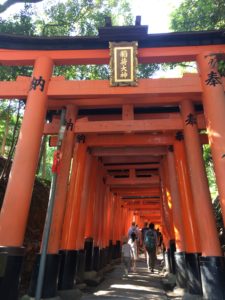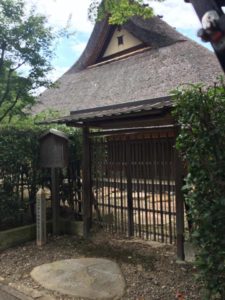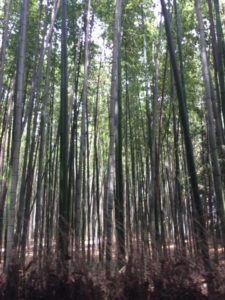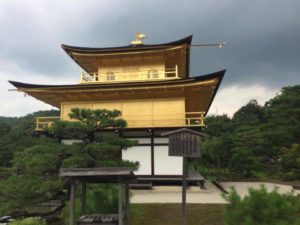
by Sueji Han, section editor
While I was in Japan, I went to Kyoto for 2 days to experience the Japanese culture. Kyoto has many historical figures and cultural locations for tourists to explore and get to know more about Japan.

The first place I went to was the Fushimi Imari-taisha Shrine. As you climb up the shrine, the gates start off small and get bigger until they’re taller than most trees. I learned from my Japanese uncle that there was history behind the writing on the gates. There was a saying that if people placed one of those gates, their business would become a success. The more money you invested, the bigger the gate was. For the most part, gate investors were from older generations before the religion of Buddhism. As we walked, the gates got closer and closer together until they were almost as densely packed as the forest’s surrounding trees.
It should be noted that Kyoto is one of the hottest cities in Japan, so you need a lot of hydration during the walk. Luckily, towards the end of the hike, there is an ancient water fountain visitors can use to cool down by drinking or pouring the water on their bodies.
Next up was Arashiyama, a city close to Kyoto. There I experienced dressing up in a kimono, a Japanese historical dress. I went to a kimono dress up shop, and was able to pick the color of my dress and ribbon, my hairstyle, and makeup preferences. Then, all dressed up, we boarded a famous human carriage called a rickshaw to take a 30 minute tour around the famous attractions of Arashiyama.


First was the bamboo forest, where bamboo was specifically grown for hundred of years. Then, we visited some old- fashioned houses and famous statues of monks that were important in Japanese history. As we went back to where we started were many Japanese styled restaurants and stores that attracted tourists. Ice cream – in particular, black sesame, green tea, and bamboo flavors- was the most popular since the weather was hot. There was a bridge in the middle along with a river allowing boats and canoes for people to see from a different perspective of the area but also enjoy nature. Still, despite the heat, the river view was beautiful. The rickshaw tour is enjoyable and a great way to see the historical attractions in the area. However, the cost is fairly high, so I might not recommend it if you also want to buy some souvenirs.

Finally, I went to the Kinkaku-ji Temple. This temple is famously known for also being painted gold in a way to represent the Heian period and also embody the spirit of the samurai warriors. The entry fee of this temple is very expensive since it’s one of the most popular attractions in Japan made by the UNESCO World Heritage Site. It’s preferable to go either super early in the morning or around 6-7 at night due the humidity and the hassle of many tourists during the daytime. Other than that the nature surrounding the temple is well preserved; almost as if people didn’t create this tourist attraction. As you go through the temple, there are many picture taking locations of the temple can be taken. At the end of the tour, there’s a stamp shop which sell charms that supposedly bring good luck for the future. Another area has stone monk statues and people can get special luck if they are able to throw a coin into the bucket in the middle surrounding the several statues.
Overall, I thought Japan was a great experience. The weather was a bit like Texas but more humid. Lots of walking is also required, so be prepared and buy lots of drinks. It is worth noting that everything (including food) is pretty expensive. But thanks to its fascinating culture, Japan is definitely worth the long plane ride.

